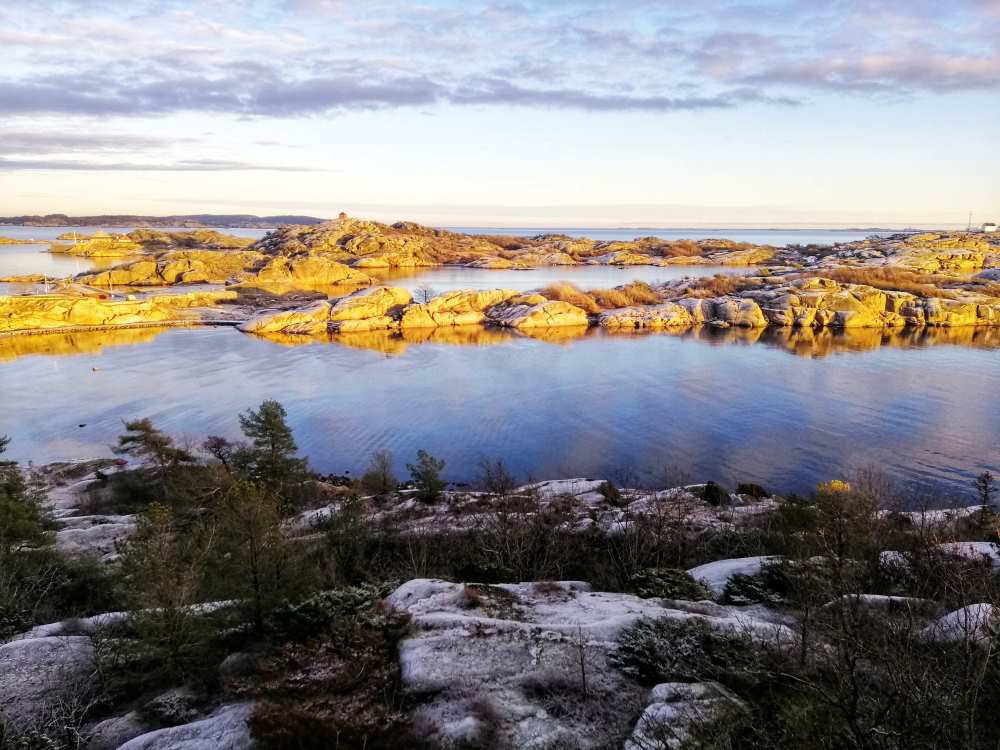If there’s one place that truly captures the raw beauty of Canada, it’s Northern Ontario. Vast forests, crystal-clear lakes, rugged cliffs, and endless skies define this region — a landscape that feels untouched, untamed, and unbelievably photogenic. For those passionate about capturing the beauty of nature through their lens, Northern Ontario offers an endless canvas of inspiration. From early-morning mist over tranquil lakes to fiery sunsets behind pine-covered hills, every scene tells a story waiting to be captured.
Whether you’re an amateur hobbyist or a seasoned professional, nature photography in Ontario reaches its peak in the northern wilderness — where every season transforms the landscape into something new and breathtaking. In this article, we’ll explore what makes Northern Ontario a photographer’s paradise, highlight some of the best landscape photography spots, and offer tips to help you make the most of your travel photography in Ontario.
1. A Landscape Defined by Diversity
Northern Ontario’s true magic lies in its diversity. The region spans thousands of square kilometers, stretching from the rocky shores of Lake Superior to the lush boreal forests near Hudson Bay. This vast expanse offers a remarkable variety of subjects — pristine lakes, waterfalls, wildlife, auroras, and vast wilderness landscapes.
Photographers can spend years exploring the area and still find new perspectives. Whether you’re shooting dramatic cliffs or quiet meadows, nature photography in Ontario finds its most authentic expression here.
Top Natural Features to Capture
-
Lakes & Rivers: Reflective waters create ideal compositions for sunrise and sunset shots.
-
Forests & Trails: Dense pine and birch forests provide rich textures and natural framing.
-
Rock Formations: The Canadian Shield adds depth, contrast, and rugged beauty to landscape shots.
-
Wildlife: Moose, loons, foxes, and even black bears add life to your portfolio — if captured safely from a distance.
No matter your style, Northern Ontario’s landscapes ensure endless photographic inspiration.
2. The Power of the Seasons
One of the most remarkable aspects of nature photography in Ontario is how dramatically the region changes throughout the year. Each season brings its own palette of colors, textures, and moods — making Northern Ontario a year-round destination for photographers.
Spring: Rebirth and Renewal
As snow melts and lakes thaw, waterfalls roar back to life. Wildflowers bloom, and wildlife emerges. This is the perfect time to capture soft lighting and vibrant greens that symbolize renewal.
Summer: Golden Hours and Lush Landscapes
Long days and warm evenings make summer ideal for travel photography in Ontario. Capture sparkling lakes and night skies filled with stars. It’s also prime time for adventure photography — kayaking, hiking, and camping.
Autumn: A Symphony of Colour
Fall in Northern Ontario is nothing short of magical. The forests explode in reds, oranges, and yellows, creating a dreamlike setting for landscape photography spots. Algonquin Park, Killarney, and Lake Superior Provincial Park are especially stunning during this season.
Winter: Serenity and Contrast
In winter, the snow-covered terrain transforms into a minimalist masterpiece. The stark contrast of white snow against dark trees or icy blues against soft skies gives every photo a tranquil yet powerful tone. For photographers who enjoy mood and atmosphere, winter is pure magic.
3. Iconic Photography Destinations in Northern Ontario
Northern Ontario is filled with extraordinary landscape photography spots that rival any destination in the world. Here are some of the must-visit locations for photographers seeking both beauty and adventure:
Killarney Provincial Park
Known for its quartzite cliffs and sapphire-blue lakes, Killarney offers some of the most breathtaking scenic views in Canada. George Lake and the Crack Trail provide panoramic vistas, while early morning fog over O.S.A. Lake creates ethereal compositions.
Lake Superior Provincial Park
The largest of Ontario’s Great Lakes is a playground for photographers. Capture waves crashing against ancient rock formations, dramatic sunsets at Katherine Cove, or the ethereal stillness of Agawa Bay. The mix of shoreline, forest, and cliffs makes it perfect for nature photography in Ontario.
Algonquin Provincial Park
No list of travel photography in Ontario is complete without Algonquin. It’s an iconic destination for wildlife photographers, with frequent sightings of moose, beavers, and loons. The park’s mirror-like lakes and winding rivers provide endless reflections, especially at sunrise.
Sleeping Giant Provincial Park
Located near Thunder Bay, this park offers incredible viewpoints over Lake Superior. The Top of the Giant Trail rewards hikers with one of the most dramatic vistas in the province — a must for every photography enthusiast.
Manitoulin Island
The world’s largest freshwater island is a blend of water, cliffs, and rolling hills. Its quiet beauty and Indigenous heritage make it a compelling place to capture both cultural and natural stories.
Each location offers unique challenges and rewards, allowing you to grow your skills while immersing yourself in Northern Ontario’s wilderness.
4. The Magic of Light and Weather
In photography, light is everything — and in Northern Ontario, nature provides it in abundance. The region’s northern latitude means longer golden hours during summer and breathtakingly soft winter light.
Early morning mist, dramatic clouds, and vivid sunsets give photographers the chance to experiment with contrast and composition. Fog over lakes, sunlight filtering through forest canopies, and reflections after rain all create painterly effects that enhance your shots.
For adventurous photographers, Northern Ontario even offers a chance to witness the aurora borealis (Northern Lights) during late fall and winter nights. Imagine capturing ribbons of green and purple light dancing across the starry sky — a once-in-a-lifetime opportunity that makes nature photography in Ontario truly exceptional.
5. Wildlife Encounters and Ethical Photography
Northern Ontario is home to an incredible range of wildlife, from moose and wolves to bald eagles and black bears. For photographers, this offers thrilling opportunities — but also responsibilities.
Ethical Wildlife Photography Tips
-
Maintain a safe distance to avoid disturbing animals.
-
Never bait or feed wildlife.
-
Use telephoto lenses for close-up shots.
-
Be patient — great moments often come from observation, not pursuit.
Capturing wildlife in their natural habitat adds emotional depth to your portfolio. It tells a story not just of beauty, but of balance — the relationship between nature and humanity.
6. Hidden Gems and Lesser-Known Spots
While iconic parks attract attention, some of the best landscape photography spots are off the beaten path.
-
Temagami Region: Towering old-growth forests and canoe routes perfect for reflection photography.
-
Chapleau Crown Game Preserve: One of the largest wildlife preserves in the world, ideal for serene nature shots.
-
Abitibi Canyon: Dramatic cliffs, waterfalls, and hydro vistas create cinematic backdrops.
-
Pukaskwa National Park: Rugged coastal terrain with stunning sunsets and pristine wilderness.
Exploring these lesser-known destinations rewards photographers with solitude and originality — the ability to capture scenes few others have.
7. Practical Tips for Travel Photographers
To make the most of your travel photography in Ontario, preparation is key. Northern Ontario’s vastness and variable weather can be challenging — but also rewarding for those who plan well.
Packing Essentials
-
Tripod: Crucial for low-light and landscape shots.
-
Wide-Angle Lens: For capturing sweeping vistas.
-
Polarizing Filter: Enhances skies and reduces glare on water.
-
Protective Gear: Weather-sealed bags and lens covers for rain or snow.
-
Drone (Optional): Aerial shots offer stunning perspectives of forests and lakes.
Timing Your Shots
Golden hour (one hour after sunrise or before sunset) offers the best light. In summer, late evenings are perfect for capturing long, glowing horizons, while in winter, the midday sun casts crisp, high-contrast shadows.
Stay Prepared
Northern Ontario weather can change quickly. Carry warm layers, bug spray, and waterproof clothing — especially if you’re hiking to remote areas.
8. Cultural and Human Elements
Beyond its natural beauty, Northern Ontario’s people, towns, and Indigenous cultures offer rich subjects for photography. Capture local artisans, heritage sites, and community events to tell a more complete story of the region.
Small towns like Timmins, Sudbury, and Sault Ste. Marie combines industrial history with scenic charm. Photographing the blend of modern life against timeless landscapes adds context and emotion — a human touch to your nature-inspired portfolio.
9. Why Northern Ontario Stands Apart
What sets Northern Ontario apart from other Canadian destinations is its authenticity. Here, beauty feels wild and real. It’s not manicured or overly developed — it’s raw, textured, and deeply moving.
Every photo feels like a discovery. The reflections of pine trees in a still lake. The glow of campfire light on a friend’s face. The quiet power of waterfalls echoes through the forest. These are the moments that remind photographers why they fell in love with their craft.
Simply put, Northern Ontario doesn’t just give you scenic views in Canada — it gives you stories. Every frame becomes a memory, every photograph a tribute to nature’s artistry.
10. Final Thoughts
For those who live for adventure, creativity, and connection with the natural world, Northern Ontario is more than a destination — it’s a muse. The combination of vast wilderness, seasonal transformation, and endless nature photography opportunities makes it a dream location for photographers of all kinds.
From the golden light of summer mornings to the serene stillness of winter nights, the region invites you to slow down, observe, and capture the world as it truly is — magnificent, wild, and free.
So grab your camera, charge your batteries, and embark on your next northern journey. The best shots aren’t just found — they’re experienced.
FAQ’s
Q1. Where are the best places to photograph in Ontario?
A: Killarney, Algonquin, Lake Superior, and Sleeping Giant Provincial Parks offer iconic scenery. Temagami and Manitoulin Island are hidden gems with rich opportunities for nature and landscape photography.
Q2. When is the best season for photography trips in Ontario?
A: Each season offers something unique — spring’s renewal, summer’s vibrance, fall’s colors, and winter’s serenity. Fall and summer are especially popular for vibrant landscapes and warm light.


